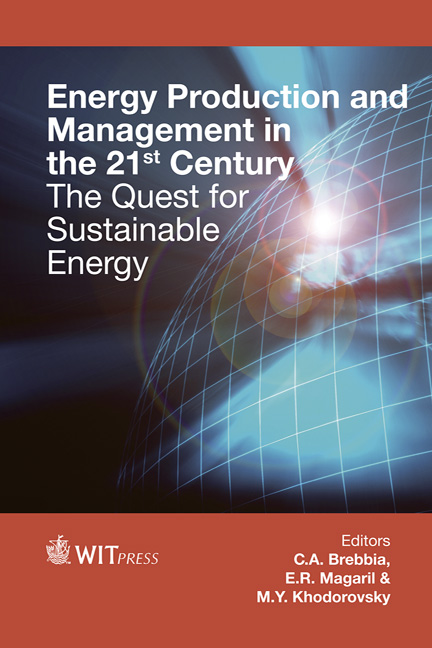Forecast And Optimisation Device For The Mode Control Of A Pumping Station
Price
Free (open access)
Transaction
Volume
190
Pages
10
Page Range
501 - 510
Published
2014
Size
1101 kb
Paper DOI
10.2495/EQ140481
Copyright
WIT Press
Author(s)
D. E. Babinovich & E. A. Shutov
Abstract
Pumping units of the country use more than 300 billion kWh of electricity annually, i.e. more than 20% of the whole amount of electricity generated by the electric power network of the country (Leznov, Saving energy in pumping installations, 1991). In accordance with the requirements of the energy efficiency law, consumers should save energy in their companies. Water supply companies face a problem of low efficiency of the main technological equipment, such as pumping units supplying water into the network, and sewage pumping stations. A possible solution of this issue might be the optimisation of energy consumption by selecting the most appropriate model for the pumping unit control. Generally, the accepted way of improving energy efficiency of pumping units is by the introduction of the variable frequency drive (VFD), which provides a significant reduction in electricity consumption. However, this approach does not lead to the solution of another important problem, which is, the correspondence of a high tariff rate of electrical energy/power during a 24-hour period with the load diagram of pumping equipment. In order to solve this problem, various control systems for a pumping unit with optimisation of the energy consumption level and maintenance of the required level of water supply reliability have been analysed in publications. Such decisions may include, for example, the introduction of a Transmission Operations Optimizer with forecasting and optimisation units presented in Błaszczyka et al. \“Optimal Pump Scheduling for, Large Scale Water Transmission System by Linear Programming” 2012, or the introduction of a pumping unit, depending on the level of electricity prices (He Zhang, Optimal Energy Production and Management in the 21st Century, Vol. 1 501 www.witpress.com, ISSN 1743-3541 (on-line) WIT Transactions on Ecology and The Environment, Vol 190, © 2014 WIT Press doi:10.2495/EQ140481 sizing and operation of pumping systems to achieve energy efficiency and lode shifting, 2011). In the paper a virtual model of the pumping unit is analysed together with its introduction into the classic control system with a variable frequency drive and forecast and optimisation control. It is expected that the use of the pumping units’ control systems along with economic planning will result in up to 26% cost reduction for the electrical power (EP) even with the growth of electrical energy consumption. Keywords: energy saving, energy efficiency, pumping stations, electric energy consumption forecast, power load frequency control.
Keywords
energy saving, energy efficiency, pumping stations, electric energyconsumption forecast, power load frequency control.





